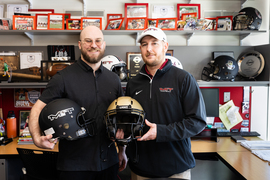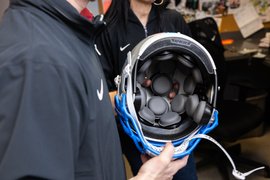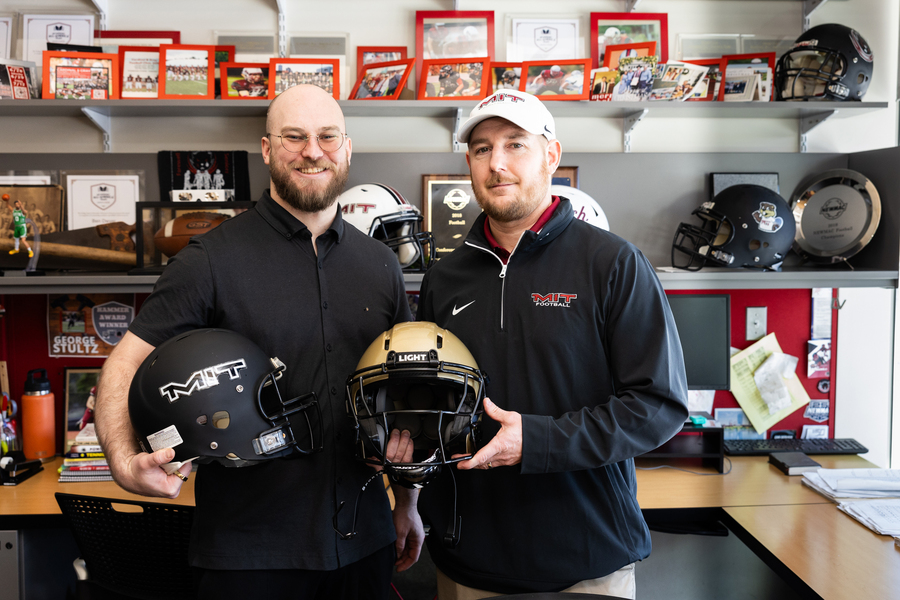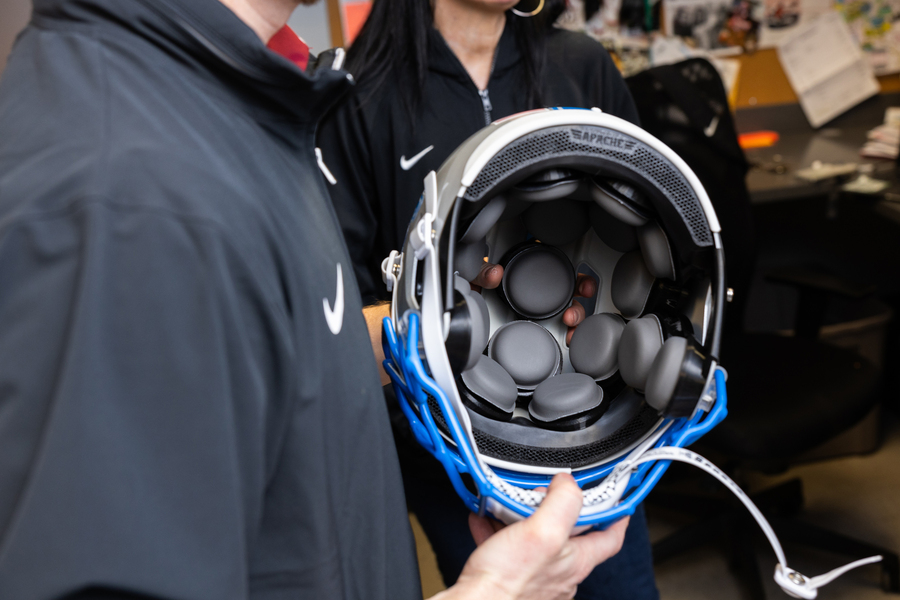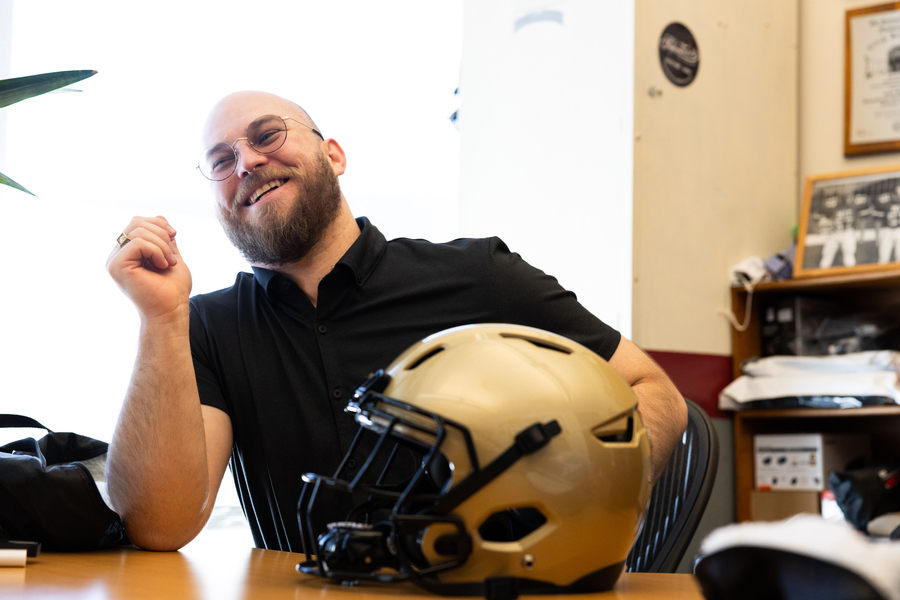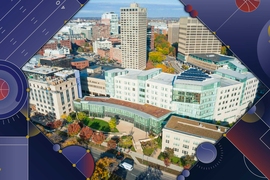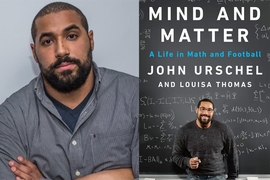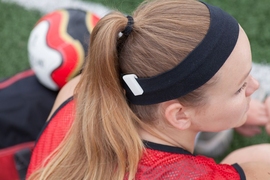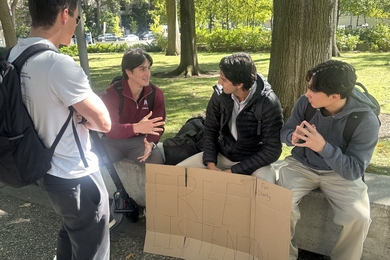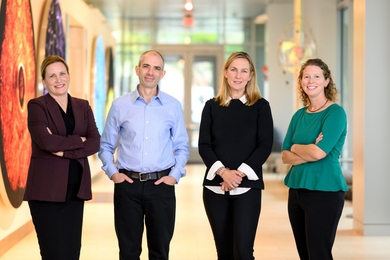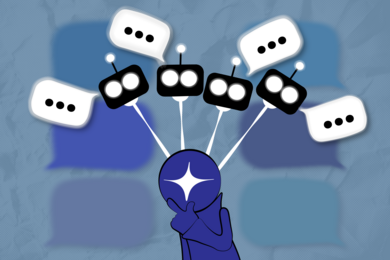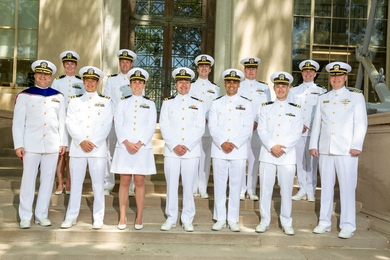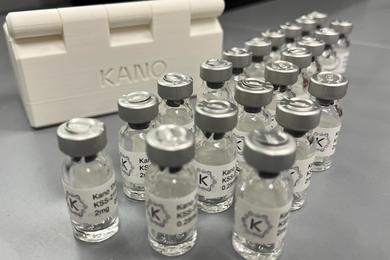Audio
Next time you’re watching football you might be looking at an important feat of engineering from an MIT alumnus.
For the last year, former MIT middle linebacker and mechanical engineer Kodiak Brush ’17 has been leading the development of football helmets for the California-based sports equipment manufacturer LIGHT Helmets. In December, Brush notched a major achievement in that work: LIGHT Helmets’ new Apache helmet line was ranked the highest-performing helmet ever in safety tests by Virginia Tech’s renowned helmet-testing lab.
The ranking bolsters LIGHT Helmets’ innovative effort to make football helmets lighter and safer.
“We’re trying to lower the overall amount of energy going into each impact by lowering the weight of the helmet,” Brush says. “It’s a balancing act trying to have a complete, polished product with all the bells and whistles while at the same time keeping the mass of the helmet as low as possible.”
No helmet ensures total safety, and the NFL carries out helmet tests of its own, but for Brush, who played football for most of his life, the latest results were a rewarding milestone.
“It’s really cool to work in the football helmet space after playing the sport for so long,” Brush says. “We did this with a fraction of the research and development budget of our competitors. It’s a great feeling to have worked on something that could help so many people.”
From the field to the lab
Brush spent his playing career at middle linebacker, a position often considered the quarterback of the defense. In that role, he got accustomed to helping teammates understand their assignments on the field and making sure everyone was in the right position. At MIT, he quickly realized his role would be different.
“In high school, I was constantly reminding teammates what their job was and helping linemen when they lined up in the wrong spot,” Brush says. “At MIT, I didn’t need to do that at all. Everyone knew exactly what their job was. It was really cool playing football with such an intelligent group.”
Throughout his football career, Brush says concussions hung over the sport. He was only formally diagnosed with one concussion, but he notes how difficult it can be to accurately diagnose concussions during games.
“We did baseline tests before the season so we could take tests after a suspected concussion to see if our cognitive ability was degraded,” Brush explains. “But as a player, you want to get back out there and keep helping your team, so players often try to downplay injuries. The doctors do their best.”
Brush worked as an accident reconstruction expert immediately after graduation before joining a product design firm. It was through that position that he first began working with LIGHT Helmets through a consulting project. He started full time with LIGHT last year.
Since then, Brush has managed research and development along with the production of new helmet lines, working closely with LIGHT’s technology partner, KOLLIDE.
“I’m currently the only engineer at LIGHT, so I wear a lot of different hats,” Brush says.
A safer helmet
Brush led the development of LIGHT’s Apache helmet. His approach harkened back to his favorite class at MIT, 2.009 (Product Engineering Process). In the process of building prototypes, students in that class are often tasked with taking apart other products to study how they’re made. For Apache, Brush started by disassembling competing helmets to try to understand how they work, where they’re limited, and where each ounce of weight comes from.
“That helped us make decisions around what we wanted to incorporate into our helmets and what we thought was unnecessary,” Brush says.
LIGHT’s Apache helmets use an impact-modified nylon shell and a 3D-printed thermoplastic polyurethane liner. The liner can compress up to 80 percent of its thickness under full compression compared to traditional foam, which Brush says may compress 20 to 30 percent at most. The liner is made up of 20 different cylindrical pods, each of which has variable stiffness depending on the location in the helmet.
Brush says the shell is more flexible than traditional helmets, which is part of a broader trend among companies focusing on concussion avoidance.
“The idea with the flexible shell is we’re now able to squish both the inside and outside of the helmet, which lets you extend the length of the impact and lower the severity of the hit,” Brush says.
A winning formula
Brush says the company’s performance in Virginia Tech’s tests has garnered a lot of excitement in the industry. The Apache helmet is available for use across high school, college, and professional levels, and the company is currently developing a youth version.
“Last year, we sold about 5,000 helmets, but we’re anticipating tenfold growth this year,” Brush says. “Dealers see the opportunity to sell the number-one-rated helmet at the price of a lot of much lower-rated helmets.”
Other helmets from LIGHT are already being used at the highest levels, with players from 30 of the 32 NFL teams choosing a LIGHT Helmet when they suit up, the company says. That traction has changed Brush’s relationship with football.
For instance, he only used to watch NFL games on Sundays occasionally. But now that his helmets are on TV, he finds himself rooting for the players and teams wearing them.
Regardless of who he roots for, when football becomes safer, everyone wins.
